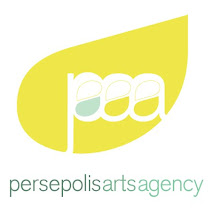I was listening to a broadcast of Tom Ashbrook’s radio show “On Point” on August 18, 2010, and noted several takeaways. It’s quite clear that American consumerism is shifting into a new phase known as calculated consumerism. While the times have forced some consumers (an estimated 15-20%) to slam the brakes on spending due to unemployment, others have taken some hits, maybe lost investment, and have become more vigilant where their funds are concerned. Some have even cut back on spending out of sympathy and respect for friends and neighbors who have lost money. It is largely the “well-off” that constituted this latter category. Experts seem to agree the current frugal phase can’t last long for these folks - they will soon be buying new toys again.
The trends also seem to indicate that people are becoming more responsible spenders. They are buying things they can use right now, rather than a bunch of stuff they might use later. The drop in back-to-school purchases demonstrates this. Of course, we must keep buying consumables (such as coffee and toothpaste), but durables (cars or refrigerators) we will hang onto, rather than trading for a new model every two years or so. Families are also becoming more environmentally aware and value seems to be at the forefront of every one's mind. Case in point: Starbucks is now offering instant coffee. It’s cheaper than usual café served coffee -- about $9 for ten servings. The national savings rate has gone from negative to 8%.
The question now is, will Americans actually spend for art? I think so. I actually foresee increased spending on creative goods. With people saving more, they will have more to spend on items with value.
Art has great value and many more people are beginning to appreciate that value, especially for their children. And the folks who have money to spend, the ones who haven’t really been hurt by the economic times, will spend money on art. I predict that people will begin to regard art less as a luxury, more as a necessity. Having cut back on their expenses, especially frivolous ones, they will notice the extra cash on hand. Combined with the concept of value on the front burner, they will realize they have too little art in their lives and will begin to seek it out. They will start attending more art shows, actor’s theaters, etc. They will expose their children to a plethora of art venues and increasingly involve them with opportunities for artistic creation. And they will invest in more pieces of creative art. We will see the rise among the artwork with lower price points.
Although purchases of higher-priced art may have fallen recently, these should increase as well. One reason for the fall may be the sympathetic frugality that the more well-off consumers have lately been demonstrating. Another explanation might be a fear of income-loss. However, as the economy move along, the purchasing of the more expensive art should resume.
Where the most expensive art is concerned, the recession should cause negligible change. If you have oceans for pockets, a low tide on one continent is probably offset by a high tide on another continent.
I have a general positive outlook for the arts market, that artists face renewed appreciation for their creativity. In the next post, I’ll take a look at evidence for/against the claim that people buy more art after a recession. As of the last Google search, all signs are positive.
Subscribe to:
Post Comments (Atom)

No comments:
Post a Comment